TRACING THE PATH PODCAST
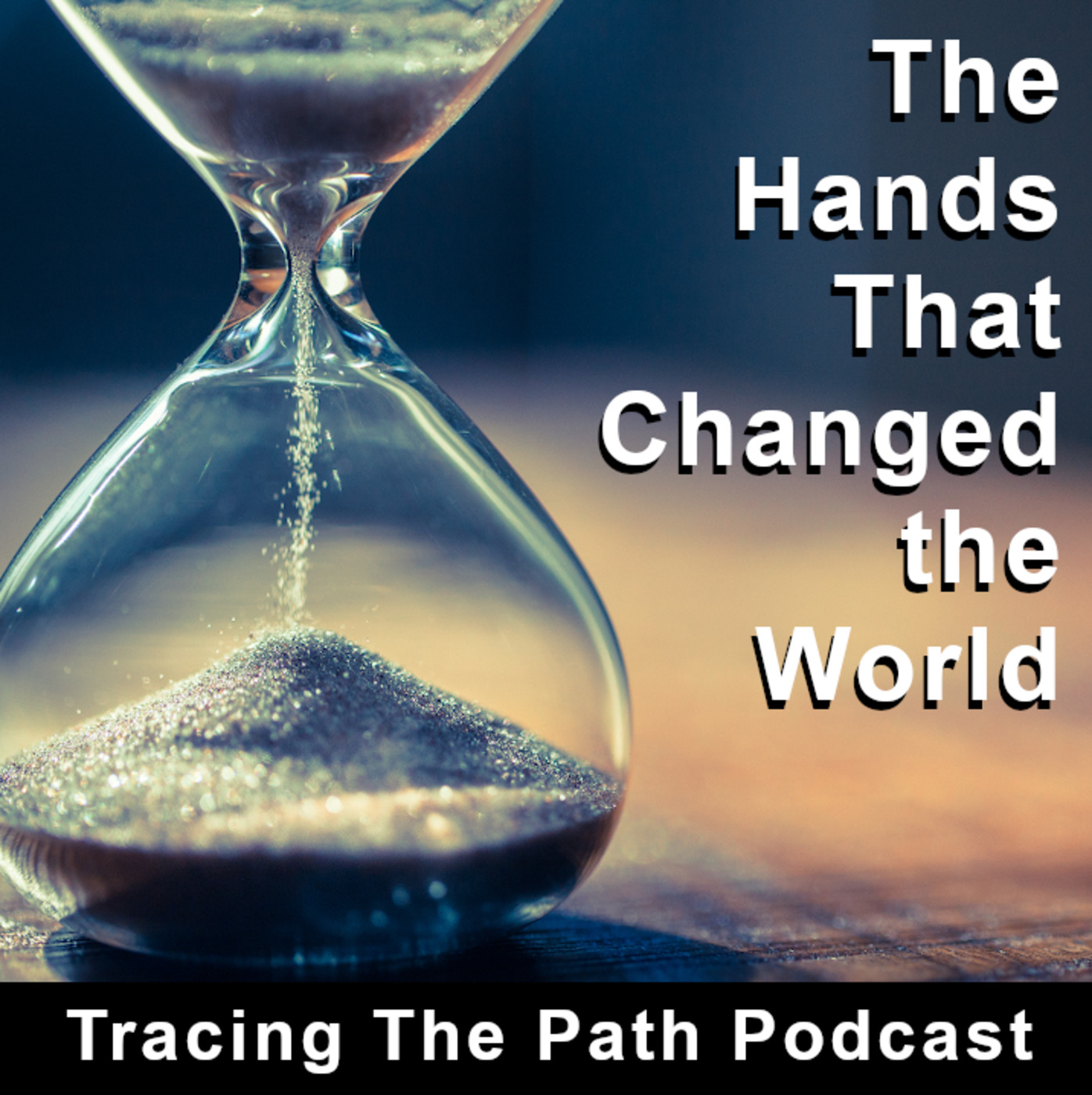
The Hands That Changed the World
This episode of “Tracing the Path,” chronicles the evolution of timekeeping, from ancient, imprecise methods to the sophisticated clocks of the modern era. It highlights how the development of accurate time measurement, starting with early sundials and water clocks, profoundly impacted human civilization by enabling structured schedules, standardized commerce, and precise navigation.
The story emphasizes key innovators like Galileo Galilei, who pioneered pendulum research, Christiaan Huygens, who invented the pendulum clock, and John Harrison, whose marine chronometers solved the critical problem of calculating longitude at sea. Ultimately, the text culminates in the story of Hans Wilsdorf, the founder of Rolex, who revolutionized personal timekeeping by championing the wristwatch, making accurate time accessible and stylish for individuals.
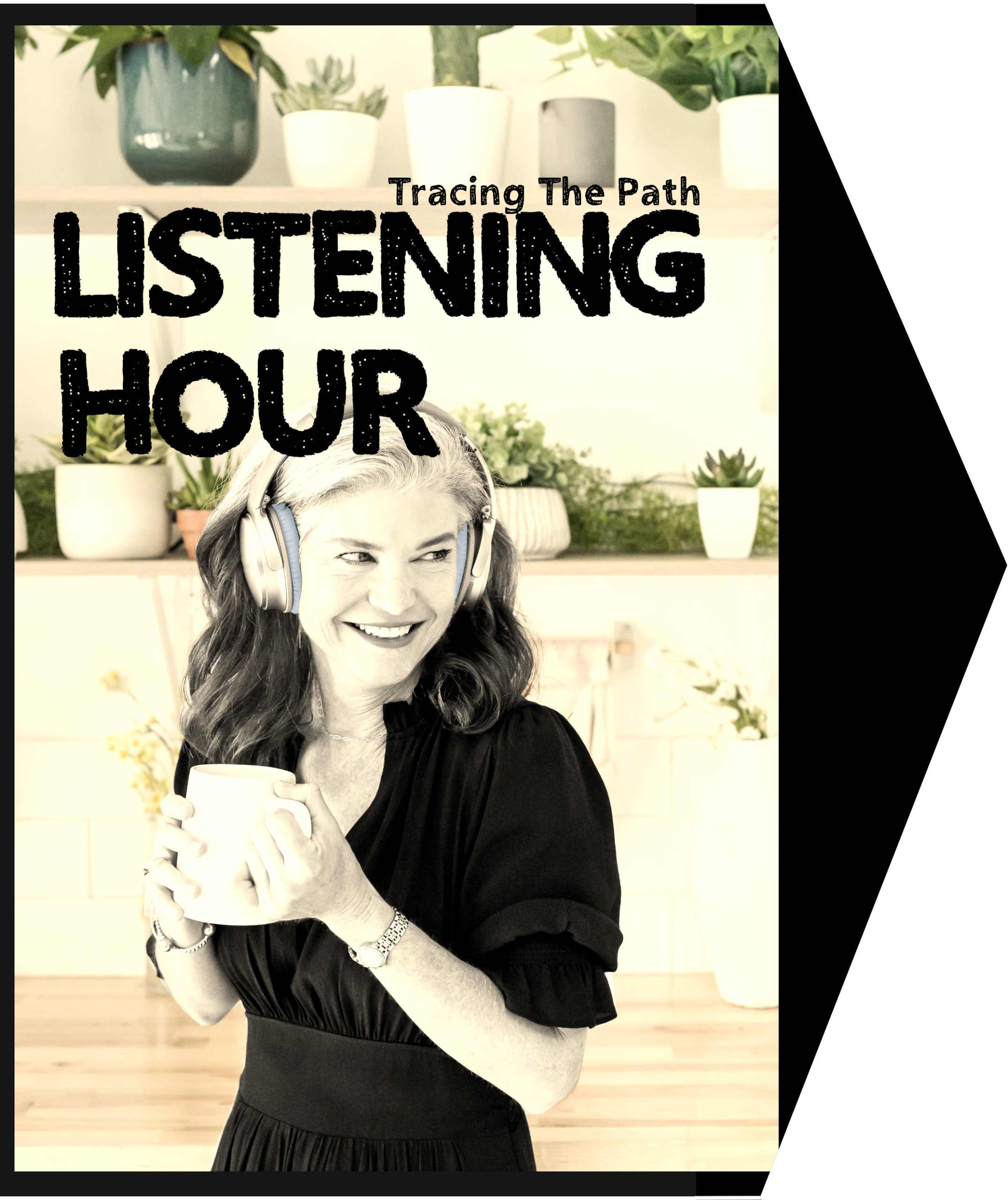
Audio Hour:
If you run an activity group, classroom or “audio book club”, click here for more information on using Tracing The Path.
Throughout the episodes, every tune is somehow related to the topic. In the Twinkies episode, for instance, the discussion of the Brooklyn Tip-Tops Baseball team concludes with “Take Me Out To the Ballgame”.
How many do you recognize? And harder, how many can you name?
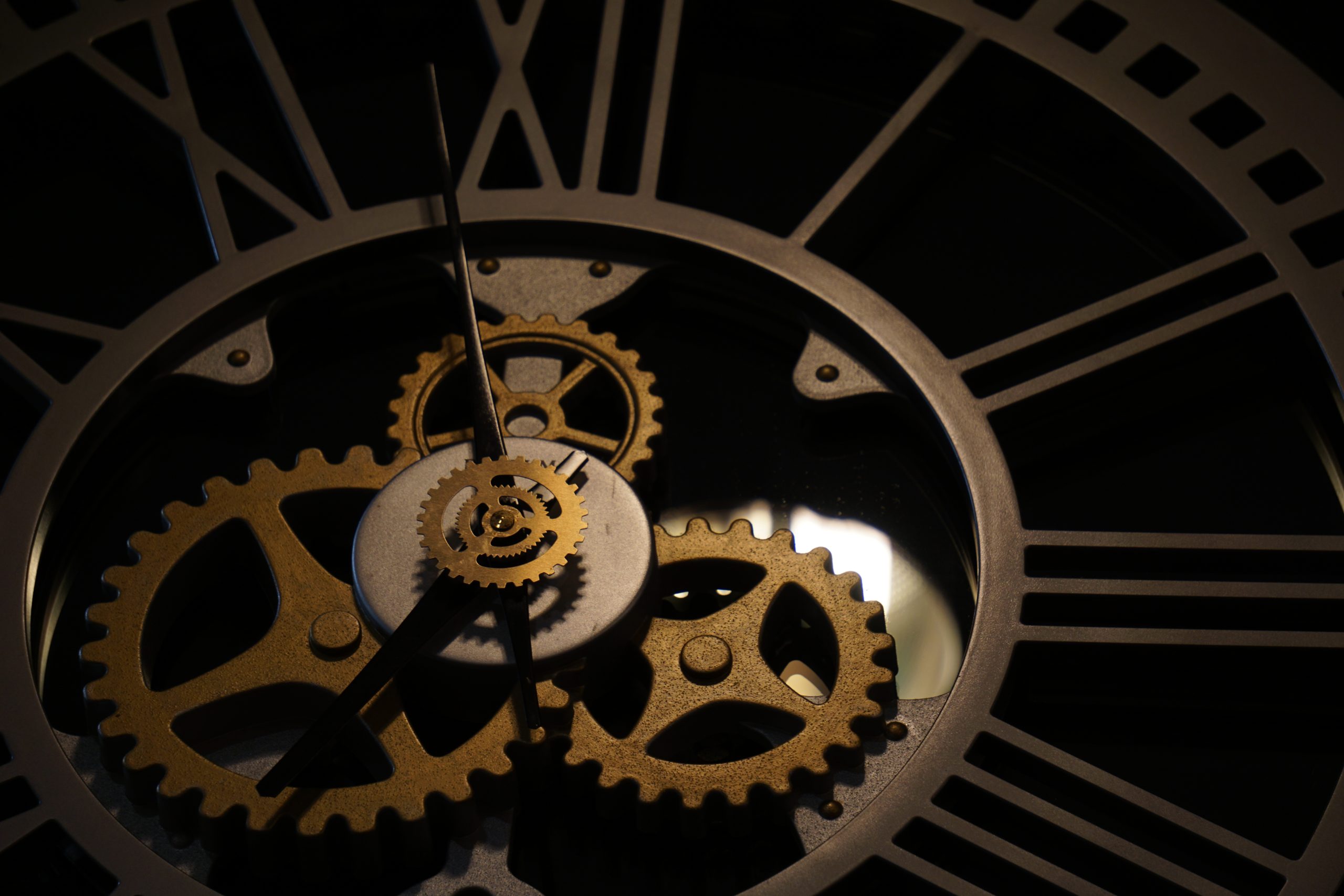
The First Clocks
In 2019, the town of Sommarøy, Norway decided they wanted to abolish time and declare themselves the world’s first time-free zone. There has never been an era of history that was time-free, but the hands of the clock changed everything. Some people feel it changed the way they live too drastically, and others, feel it stole their identity.
To some degree, clocks have been part of civilization from the beginning, but for most of the world’s history, the clock didn’t dictate the day. Sundials are the earliest evidence of timekeepers. Ancient Egyptians divided the sundial shadow area into twelve units, effectively creating the twelve hours of sunlight.
Nomads and hunters would use the moon, not the sun, to track how long they had been out. Since the moon phases repeat after 29.5 days, they would know a month had passed when the phases began repeating. But sundials and moon phases came with limitations, like fog and clouds. In addition, the need to keep track of time in other situations opened opportunities for other ideas.
Candles were often used to measure time. The wax base would have lines spaced out that would disappear as the candle burned. And water clocks were created. A vessel with a hole in the bottom was plugged and filled with water. Since water would always come out at the same rate, it was a great tool to measure consecutive things.
In courts, for example, a water clock would give everyone an equal amount of time to speak, and also give us the phrase, “You are out of time.” But like sundials, water clocks came with limitations and imperfections. Atmospheric pressure and temperature would change the flow rate, which is why they came with instructions on how to fill them each day.
Early Benedictine monks used the sundial to break up their day into seven daily prayers. Lauds in the morning, then primes, terses and sext before noon, the knowns, vespers, comeplan and mittens to round out the day. A monk was in charge of watching the sundial and then ringing a bell at each prayer time. This moment of synchronizing prayer with the clock changed the world. Never before in the history of man had one’s day been structured or scheduled.
Starting around 1250, the chase to make a mechanical clock began.
The first clocks didn’t look like you’d expect. They started in towers and reconditioned grain mills. Towers were necessary because the first mechanical clocks used gravity to pull weights down to power the hammer that struck the bell at predetermined times. The bell towers were referred to by the Latin word for bells, “cloka,” which is how we get the word “clock.”
Soon there was a push by artisans to add a visual to the bell towers. And in 1271, English astronomer Roberta’s Anglicus noted that artisans were trying to make a wheel that moved exactly as the motion of the equinocptial circle, so they could add a visual face to the bell towers. And soon, there came a public clock with face and hands, visually expressing the time.
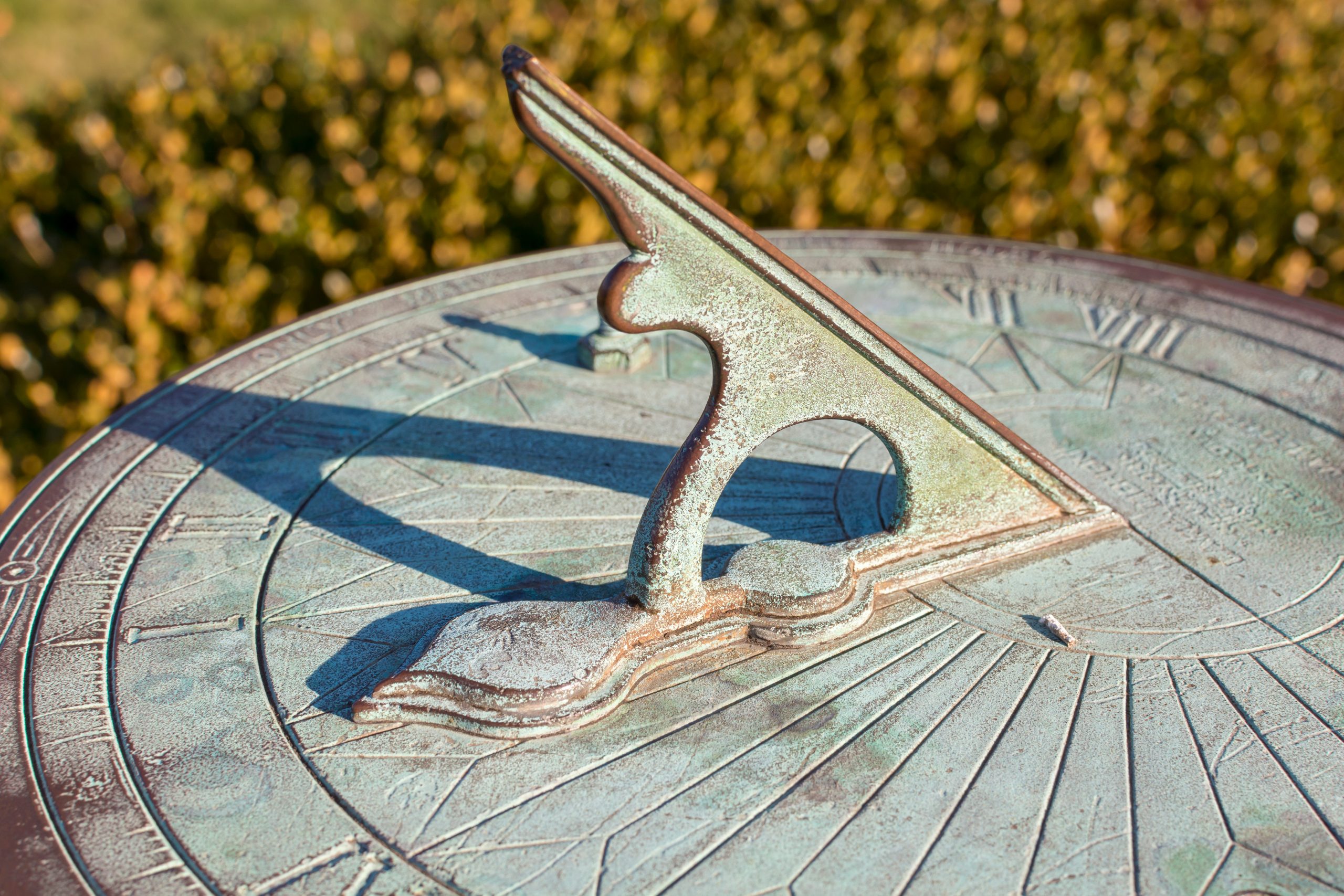
Hours and Minutes
Long before clock faces, the day had already been divided up. The moon faces set forth the months. The sundial divided the day into twelve hours which were duplicated for the night. And Babylonian astronomers had divided the 360-degree movement of the sun by twenty-four hours to determine the sun-moved 15 degrees for each hour. Then they divided each hour by 60. That first calculation, that first division, they called the prima minuta, which is where we get the word minute.
And then they divided the minutes by 60, the second calculation, or secunda minuta, which is where we get the word “second”.
Months, hours, minutes, and seconds.
When the day started was the next point to be determined.
Early Italian clocks set “sunset” as the start of the new day, and the Babylonians used sunrise. But the world eventually settled on the French system of starting the day, halfway between the start of night and the start of day. They called it midnight.
Early clock hands revolved around the face one time per day, and thus clock faces were either numbered one through twenty-four, or were numbered one through twelve on one half and one through twelve on the other half.
Clockmakers made the numbers adjustable based on where they were sending them, and thus started the tradition of having public clock towers which had bells that rang periodically during the day.
For many, that was enough to demarcate the day.
But then came the desire to own your own clock at home, which brings us to the first hero of our story.
Galileo Galiliei
Galileo Galilei was born in Pisa, Italy in 1564, one of six children. He grew up in a religious family and seriously considered the priesthood. But at his father’s urging, he went into medicine.
While studying medicine in the Great Hall in Pisa, he noticed the movement of a chandelier, moving back and forth due to the air currents. Being a scientist at heart, he measured the time it took for the chandelier to swing from one end to the other, with his heartbeat.
From his heartbeat, he could tell that the chandelier swing took the same amount of time, whether it swung far or swung short. He thought that very curious. He then went home and constructed his own pendulum experiments and convinced his father that perhaps mathematics was a better field for him than medicine.
And this moment is also the first evidence of man’s pursuit for precision in measuring time.
One of his first triumphs with the pendulum was the invention of the pulsilogium, a device to measure heart rates. Galileo would lengthen and/or shorten the strings of a hanging pendulum, and then synchronize that with someone’s heart rate. At which time, the pulse could be labeled a 6″ pulse or an 8″ pulse or a 5″ pulse, and then let that be compared to the pulse of others.
While it didn’t tell much, it was a start.
Around the same time, he also invented the telescope, and through it he discovered the moons of Jupiter. He actually timed the orbits of the moons of Jupiter and came to the conclusion that the regularity of their orbits could be used to make a universal clock. And furthermore, suggested it might even be possible for ship navigators to calculate their longitude from the orbits, still a very pressing problem in the world.
In 1629 Galileo turned 69 years old.
Way up north in the Netherlands, Christiasn Huygens, who would one day become the brightest scientific mind, was born. Christian was educated at home until he was 16, and was encouraged by his mother as part of his education to write and correspond with the world’s intellectuals, to which he conversed with Galileo.
He was a huge fan of Galileo’s work and actually went to school to study mathematics.
Following in the footsteps of Galileo, he made improvements to the telescope, adding a second lens for improved clarity and to reduce dispersion. And through it, he even discovered Saturn’s Moon Titan.
In 1657, Huygen’s took an interest in Galileo’s work on pendulums, and invented the pendulum clock. Then a few years later, he wrote one of the three most important works on mechanics ever written, a book about Pendulums and oscillations.
Only books by Isaac Newton and Galileo himself are considered more important.
Christiaan Huygen’s Pendulum Clock became the most accurate clock of the time, improving accuracy from being 15 minutes off per day to 15 seconds off per day. But that didn’t solve the most pressing issue of the times, the same issue that plagued Galileo.
Christiaan was Dutch. The Dutch were some of the most prolific traders and explorers in the ocean.
Where am I in The Ocean?
While Christiaan’s clock was the most accurate, a pendulum clock could not work on a rolling, unstable boat.
The Dutch were regularly traveling to India for trading, and actually founded and settled the Cape of Good Hope in South Africa as a resting point on the long trip. But because it was still not possible to calculate longitude, ships traveled within sight of the shore all the way around Africa to India.
Travel across the oceans was perilous at best and fatal at worst.
In 1707, over 2,000 British soldiers died when a ship lost track of where they were and crashed into the rocks of the Scillly Islands. In response, the British Parliament, under Queen Anne, passed the 1714 Longitude Act, which set out over $3 million in prizes to anyone who could create a tool that could accurately measure longitude, which brings us to the next hero of our story.
John Harrison John was born in 1693 near Yorkshire to a carpenter father. Following in his father’s footsteps, Harrison built and repaired clocks. When he was 20 years old, John improved the pendulum clock again. This time, making the pendulums out of brass and iron rods so that their expansions and contractions could cancel each other, making the pendulums even more reliable. John was in good company as well. His brainstorm partner was astronomer Edward Halley.
Edward was a brilliant mathematician who once calculated the trajectory and return of a giant comet, to which the comet garnered his name upon its predicted return of Halley’s comet. When John Harrison learned about the 1714 longitude prize, he wanted to win it.
The task was to create a clock that would not be affected by temperature, pressure, or humidity. It would have to remain accurate over long time intervals, resist salt air corrosion, and function on a moving ship. Even though Isaac Newton, Galileo Galilei, and Chris John Huygenn, recorded this saying it was impossible, John Harrison thought he could do it.
It actually took John 30 years and five different models, but he achieved the goal, won the prize, and revolutionized maritime travel for the world. Perhaps the most surprising thing about his invention, it wasn’t the size of a car or a fridge or a grandfather clock.
John Harrison built the world’s most accurate pocket watch.
Remember how the Babylonian astronomers figured out that every 15 degrees of movement by the sun took one hour? Well, this was the basis of John’s longitude solution. A ship would start out in London, for instance, with two of Harrison’s clocks, or chronometers, as they were called. The boat would leave at precisely noon when the sun was directly overhead, and the clock set to noon.
The next day, after they had traveled all day and all night, when the sun was directly overhead again, the watch would be checked. If the watch read 11 a.m., they would know they are one hour ahead of London. One hour, according to the Babylonians, was 15 degrees of travel. So longitudinally, they were 15 degrees beyond where they had started.
Finally, a way to measure the distance of their travel.
O’Clock
When clocks first became a staple of daily life, the nature of them conflicted with the way most people grew up. For the most part, “what time is it?” wasn’t a question, but for most people the answer if asked between one and four would have been ‘mid-afternoon’.
So when people began asking the time, the answer was, according to the clock, it is three.
Or,
it is three, says the clock.
Or, it is three of the clock, which finally became, it’s three, o’clock.
But a clock was only useful if it was just set every day. For ships in the harbor, that was a problem. For them, a little bit of time error could be a huge distance error, so the clock needed to be set at the local observatory where the astronomical calculations could be made, which meant someone had to de-board the ship go to the observatory and return.
For British Admiral Robert Wauchope, this was not acceptable. He became interested in developing some sort of signal that could be sent from an observatory. His idea was to install a large hollow metal sphere on a pole above the observatory with some mechanical way to drop it.
He would call it a time ball.
He presented his idea to Parliament in 1829 and got approval to test one at the Portsmouth Observatory. It was perfect, and they could see exactly when the ball was dropping. By the mid-1830s, time balls were then installed everywhere. Even the US Naval Observatory in Washington, D.C. had won.
Finally, the problem of syncing time was solved for the shipping industry. But the problem of ssyncing time existed for railroads as well. While they weren’t trying to calculate longitude, they did have to pick up passengers along the way, at predetermined times.
But in the 1840s, everyone had their own time. And for the most part, that time was dictated by the person in the town who was charting the highest point of the sun. But guessing when the sun is at its highest is not easy, and the sun peaks at different times depending on where you were, through every town at a different time.
As railroads spread across Great Britain, these discrepancies were a problem. So the railway made an executive decision to base all their times on the observatory at Greenwich London, and thus they would publish one schedule based on that, no matter what the time was in the town you were living in.
But because it became inconvenient for towns to use any other time than that, by 1853, all public clocks in England displayed Greenwich Time.
The United States had a similar problem on a much larger scale, and because of the land area involved, the Greenwich solution wouldn’t be practical.
Furthermore, with dozens of train companies scheduling was a nightmare.
In Buffalo, New York, for example, the station had three separate clocks on the wall. One of the clocks was local Buffalo time. It was for the passengers departing the train to know what time it was in Buffalo. The other clock was New York City time, and that was for the people riding the New York Central Railway, and the third clock was Columbus Time, and that was for the people riding the Michigan Southern Railway.
When electricity and the telegraph made an appearance, the observatories in each area started offering a time service. For a fee, the time could be sent to you every day. Jewelers and railroad stations were the first subscribers. Jewelers would get the time and set an accurate clock in their window for all passerby’s to set their own clocks. This new time service reduced the number of towns with different times, but it still left everyone on their own observatory time.
This was never more evident than on May 10, 1869, the first national media event in the United States. The media from all over descended upon promontory point, Utah. That is where the first transcontinental railroad would be finished, connecting California to the East Coast.
It was such a crazy media spectacle that the actually wired the golden spike and the hammer, which was called the mall, directly to the telegraph. And at the very moment that the hammer came down upon the golden spike, the word “done” was telegraphed to everywhere at the same moment.
In fact, it was sent to Virginia City at 12:30, to San Francisco at 11:44, and to Washington, D.C. at 2:47, all at exactly the same moment.
53,000 miles of track were completed with 8,000 towns thinking it occurred at a different time. The country needed a national system. Charles F. Dowd, a principal of the Temple Grove Lady’s Seminary, now known as Skidmore College, presented an idea to a committee of railroad superintendents and then followed that up with a pamphlet titled “A System of National Time for Railroads”.
His proposal was to divide the US into four time zones, each 15 degrees apart, each being one hour behind or ahead of the next. He based his system on Greenwich Time, figuring out the 15-degree increments from there. His plan in 1883, which was largely adopted, though the time zone lines were changed slightly for political reasons.
And then a heroic effort was made to get all the observatories on board with the new plan. And on April 18, 1883, all the observatories sent out the new time at once, putting America on railroad time.
The next year, 1884, 50 countries gathered at the International Meridian Conference to determine a universal meridian and date from which the world would operate. It was at this meeting that politics, and international relations came to a head over the concept of time.
India, which already felt oppressed by the British, felt this was one more attempt to exert control and they refused. They were not going to give up their public identity by changing the time that it established their culture. France also didn’t like the general consensus that Greenwich time be made the standard. While London was important to maritime trade, they were not going to let Paris be made a second-class city.
Despite the pushback, Greenwich meantime was approved, which brings us to the final hero of our story.
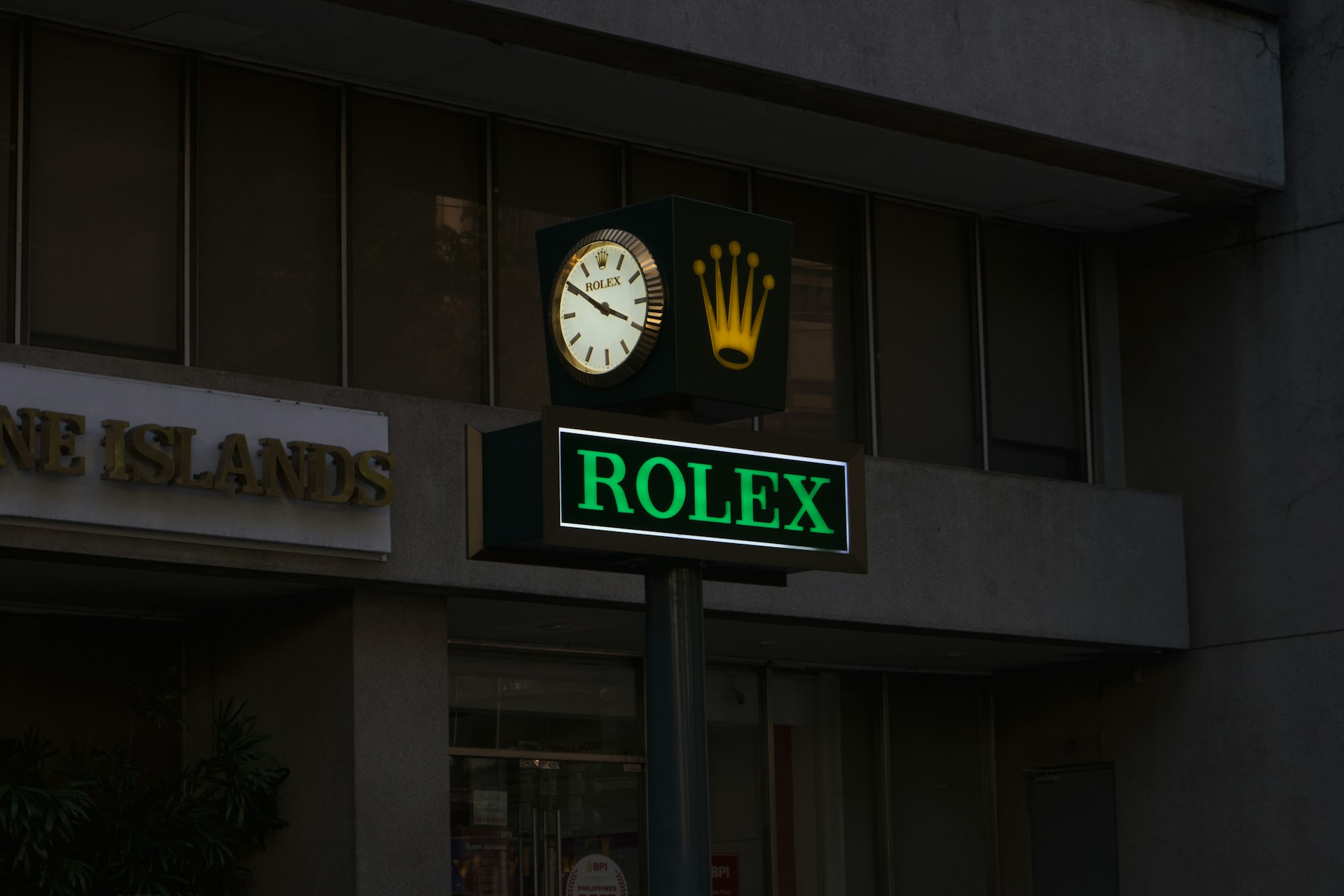
Fancy a Rolex?
Hans Wilsdorf was born on March 22, 1881, in Kombach, Germany. Sadly, both of his parents died when he was 12 years old. His uncle stepped in and to Hans’ chagrin sold the family’s iron tools business to put Hans in private school.
Unfortunately, he was a fish out of water being a Protestant at a Catholic school.
Looking back, however, he noted how useful that may have been to his future, as it made him focus solely on math and languages in school. Hans began his career as an apprentice for an influential Pearl Company in charge of calling jewelers and taking orders for beautiful pearls.
Then in 1900, Hans began his career in Swiss watchmaking, working as an English correspondent. His firm exported one million francs of pocket watches annually.
Hans was in charge of winding hundreds of pocket watches every day, making sure each was accurate. In 1903, he took a job with a different company. Before he and his brother-in-law felt they had enough experience to open their own shop. But for Hans the world was changing and he wanted to be out in front of it. He’d heard rumors about the 1899 Boer War in South Africa, which set him on a new path.
The Boer War goes back to the days of Christian Huygen. Back in 1652, the Dutch found a resting point on the way to India and settled there. The place was called the Cape of Good Hope. But they did more than create a docking point. Many Dutch, German, and French actually settled there, moving the indigenous Koykoi people out and setting up their own farms.
These settlers were known as the Boer population, for the Dutch word for farmers.
Well, in 1899, the British moved in to take over South Africa, and with that they wanted to move the Boer farmers out. But the Boer fought back. And in the age of clocks, the Royal Navy attempted to synchronize their efforts, which required soldiers to have pocket watches.
But pocket watches were not practical in battle. Having to reach inside their coat each time they needed to check the time wasn’t practical at all.
So soldiers started tying their pocket watches to their wrists to make it even easier. Even though only women wore bracelets, Hans Wilsdorf could see the future of clocks was on the wrist.
He contacted a firm he knew that made high quality watch mechanisms and imported a large quantity of them. He then put them in watch cases he also ordered. Using his experience in the Pearl business he sold them to jewelers for them to add their brand name.
But three years later in 1908 he wanted to start putting his company name on the watches, Hills Dorff and Davis. But that name was a way too long for a small dial. So he invented a five letter word that he didn’t think was a word in any other language and starting putting that on the watches.
In 1914, with the world at odds with Germany, he thought his company name, Hilsdorff and Davis might not be helpful anymore. He thought it sounding German might even hurt his business. So he changed the company name to match the watches.
Rolex.
Looking for a way to stand out, he needed an angle.
A third party had pitched him the idea of making a dustproof waterproof case that still allowed the watch to be adjusted, and Hans loved it. He felt it was the angle he needed. He named the new watch the oyster, after the animal that made beautiful pearls. And then in 1927, he paid a British swimmer who was attempting to swim the English Channel to wear the watch during her swim.
And then he purchased five days of full-page ads on the cover of the Daily Mail newspaper, proclaiming the success of the swim and of the watch.
And Rolex took off, putting pocket watches on the back burner and making everyone chase Rolex as the Premier wristwatch company.
In 1944, Hans Wilsdorf’s wife passed away, and he created the nonprofit Hans Wilsdorf Foundation in her honor, a company dedicated to helping charities. And then he did the unthinkable. He put 100% of the shares of Rolex into the non-profit foundation, making, to this day, the finest watchmaking company in the world, a non-profit corporation dedicated to helping charities. Rolex.
The introduction of the clock in the middle ages changed the world as much as the automobile, the plane, and the computer. And now you can get one for as little as $9.99 any day of the week. They’re even more accurate than Christian Huygens, Marine Chronometer.
CUTTING ROOM FLOOR
To hear all the stories that hit the cutting room floor, you have to listen to the episode.
ABOUT THE SHOW
Let us tell you the story of the 20th Century, by tracing each event back to the original decisions that shaped it. You’ll quickly find out that everybody and everything is connected. If you thought you understood the 20th Century, you’re in for a treat.
Tracing the Path is inspired by storytellers like Paul Harvey, Charles Kuralt, and Andy Rooney.
INTERCONNECTED EPISODES
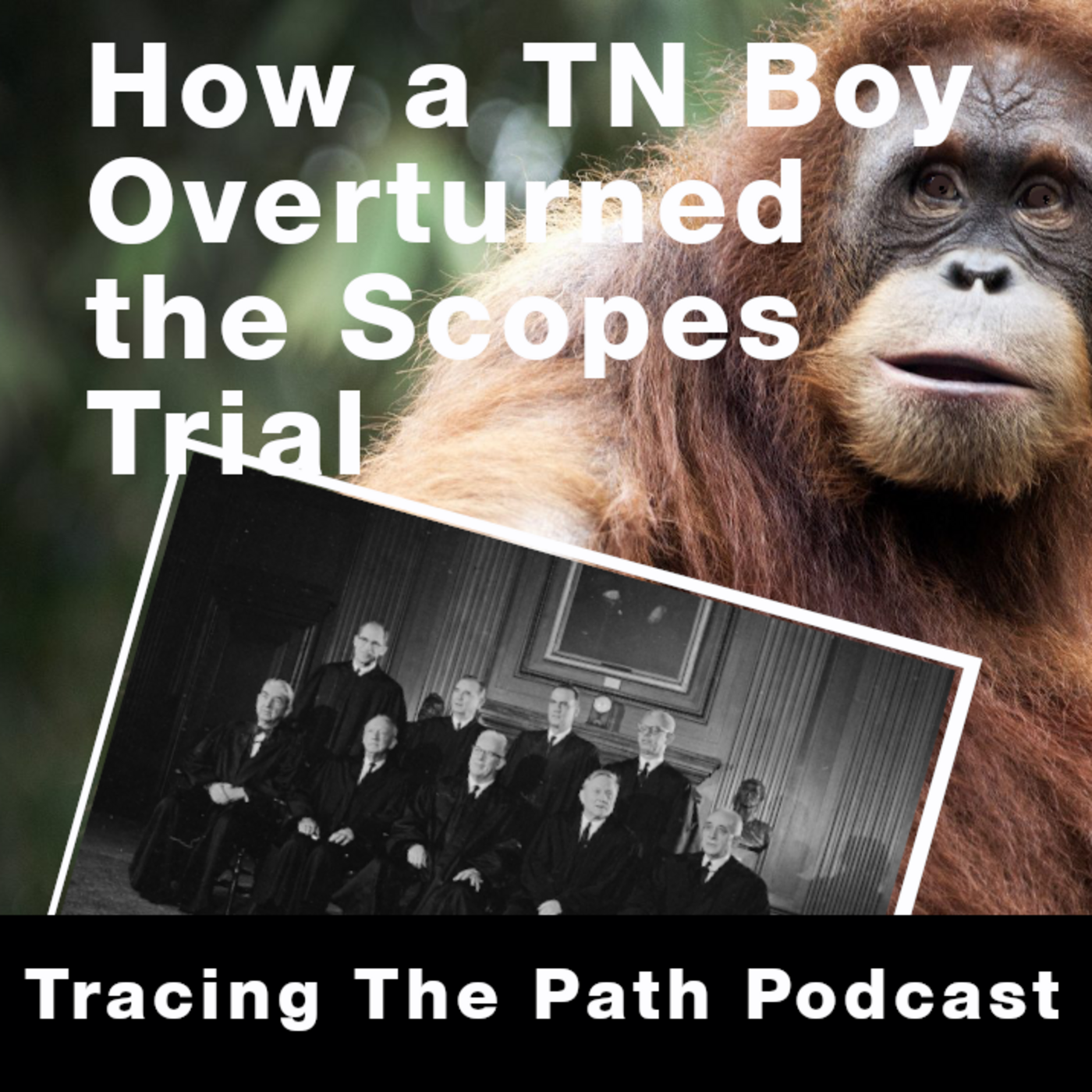 |
How a Tennessee Student Overturned the Scopes Trial Verdict Can you believe the 1925 Scopes Trial was undermined by a Tennessee high school senior? |
 |
How the Post Office Grew America? You’ve never heard how important it was for the Post Office to Expand |
 |
Who Started the Outer Space Race? Elon Musk isn’t the first person to have his eyes set on Mars. |
 |
The Blue Jeans that Got Away With Murder Follow the color blue from ancient founding to the murder of millions. |
 |
The Comet That Saw it All The actual significance of Halley’s Comet |
SEE THE BIBLIOGRAPHY
SUBSCRIBE AND LISTEN (FOR FREE!)
RATINGS & REVIEWS
If you enjoy this podcast, please give it a rating and review.Positive ratings and reviews help bring Tracing The Path to the attention of other history lovers who may not be aware of our show.



